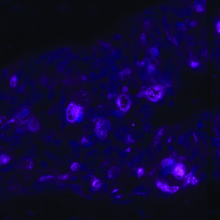For everything there is a season — hormones too
Weizmann study identifies seasonal surges in human hormones
Briefs

When bears hunker down to hibernate, they’re taking their snoozing orders from hormones—secreted chemical signals whose composition and intensity vary according to the seasons. While this seasonal flux in hormone activity has long been recognized in animals, no parallel dynamic has ever been documented and measured in humans. Until now.
A new study led by Alon Bar and Avichai Tendler, research students in the lab of Prof. Uri Alon of the Department of Molecular Cell Biology, reveals that human hormone production also follows a seasonal pattern. Published in the prestigious Proceedings of the National Academy of Sciences (PNAS), the study was based on original mathematical methods that allowed the team to tease hormone activity data from electronic medical records covering 46 million person-years, and which include millions of hormone blood tests. These records — maintained by Clalit, Israel’s largest health maintenance organization — allow researchers to conduct large-scale biomedical studies while preserving the subjects’ anonymity.
The team from the Alon lab first noticed a surprising seasonal pattern in a single hormone — cortisol, which plays a role in stress response. To see whether other hormones might also fluctuate seasonally, they turned to Prof. Amos Tanay of the Department of Computer Science and Applied Mathematics. Prof. Tanay is the creator of computational methods that, in a number of previous studies based on Clalit data, resulted in significant medical insights.
Peaks and troughs
Tracking 11 different hormones, the scientists noticed that different hormones peaked at different times of year. For example, testosterone and estradiol — the former prevalent in men, the latter in women — were found to be “mirror images” of one another; testosterone in men surged in January and again, a bit lower, in August. Estradiol in women surged and dipped according to the same seasonal pattern. The team also noted that, in a second category of hormones, produced in the pituitary gland and known to trigger the cyclical expansion and shrinkage of hormone-secreting glands, the expansion and shrinking follows a cyclical pattern that tends to surge during the summer months.
In their PNAS paper, the scientists offered a bio-mechanistic explanation for the seasonal pattern: cyclical growth and shrinking of glands generates a “feedback circuit” with a natural frequency of about a year. Taking place gradually over weeks and months, this process triggers change that differentially affects the two hormone types, and causes peaks to occur in different seasons. These results indicate that, like our friends in the animal kingdom, humans are programmed by their hormones to follow seasonal patterns in matters of reproduction, metabolism, growth, and stress adaptation.








